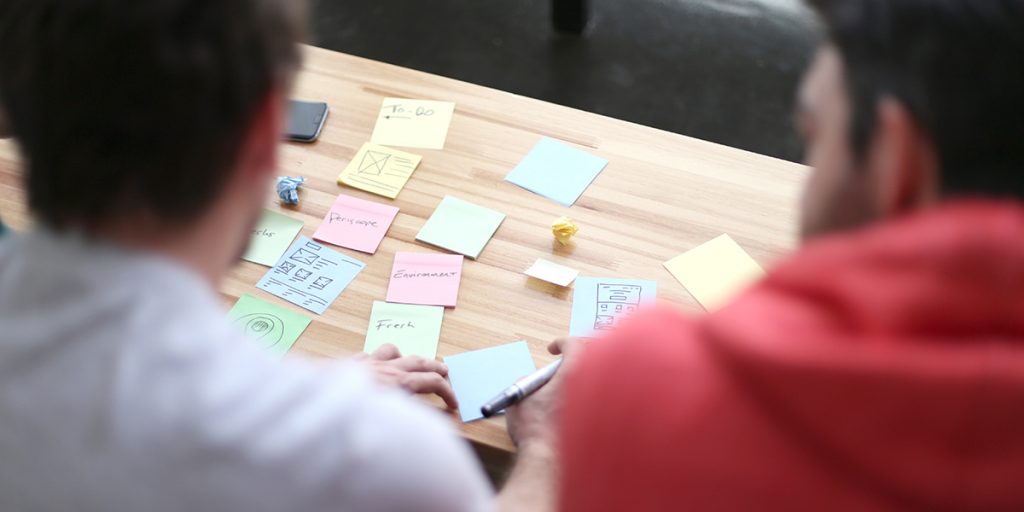Most managers these days agree that their companies need to become more “user centric”. Focusing on the user and fulfilling their needs requires a deep commitment to innovation — something that’s easy to talk about but harder to achieve.
That hasn’t been a problem for Jeff Bezos, however. Right from the start, when he was still building Amazon, he had the notion that focusing on the customer was the right way to do things. He stuck by his vision for decades, even when everyone else thought his business ideas were insane.
Today, you can see that his “customer first” vision gets carried out with every move the company makes. With a relentless drive to please the customer, every decision Amazon leaders make and every design solution their teams create is based on the user-centric mentality. In short, if something isn’t adding value to the customer, then it’s not in accordance with the “Amazon Way”.
“Start With the Customer and Work Backward”.
Jeff Bezos
But how, exactly, does that translate for other organizations? Does being user-centric bring business benefits to other types of companies? And what, exactly, are those benefits?
Here’s a hint. We think it has a lot to do with something that’s a common topic around here: Design Thinking. Let’s explore how this works and see if we can come up with a few general guidelines that everyone can follow for becoming a user-centered organization.
The Benefits of Being a User-Centered Organization & How it Can Improve Business Outcomes
When all activities in an organization begin from the standpoint of examining the users and their needs, the benefits can create a positive impact across several aspects of business:
- Higher Productivity. Having a great product and delivering a great experience through design thinking makes your users happy but it also makes your team members happy. People who work at jobs where they’re truly making a difference in people’s lives are more committed and more productive. And the benefits build upon one another. Motivated teams means not just higher productivity but also more profits. And when you become known for having a positive company culture, it will be easier to attract and retain top talent.
- More Sales. Standing out in a crowded market isn’t easy these days. Companies have to find ways to identify their ideal users, meet them where they are, whether it’s on social media, online search, or chat bots. Then, they need to continually delight and surprise consumers with superior customer service. And you need to respond to their feedback and make improvements accordingly. All of these essential ingredients for success are fueled by a user-first mentality.
- Sustainability for Your Business. Offering users what they want and delighting them will result in more sales but you also need to build loyalty for future sales down the road. Jeff Bezos sees user dissatisfaction as a wonderful motivator for improving things. Keeping your users happy by continuously tweaking your offerings is how you build loyalty and long-term value in your users.

How to Embrace the User-Centered Mentality
So we’ve established one thing: as user’s needs are constantly changing, businesses need to keep reinventing in order to come along with them. Because a user-centered approach requires being continuously open to change and expanding its horizons when the user needs it. That means we can fail. But if we do it we will take advantage of it, constantly learning from the experience. Failure needs to take root in your company culture.
If constant innovation is the right way to go, then design thinking is a great methodology that organizations can use to pull all of this into motion.
In software development, design thinking gives us a new approach to face the problems we need to solve, encouraging us to explore new alternatives, with an open and collaborative process. This methodology is based on human-centered innovation, that’s the key! This means that everything starts with a deep understanding of the context, motivations, and aspirations of the users, and a need or problem to solve.
The same notion applies for user-centric business models: the journey begins with empathy for your potential users. Let’s take a look at the design thinking methodology and see how it could lead to a company-wide user-centered mentality.
- Empathize: You begin by researching your users, finding out how they live, behave, shop, spend their free time, what they are worried about, and what goals they have. You have to understand your users’ needs, put yourself in their shoes.
- Define: Exploratory research isn’t useful to the business unless there’s some actionable insight can take away from it. So, with all the data you gathered, you need to define the problem. In a user-centered company, this needs to be clear for everyone involved: The problems to solve, for whom and why. This will help focus efforts and engage team members under the same goal.
- Ideation: Once you have your problem defined, you should think as many ideas as possible to solve it. The quantity is important now, because this part of the process needs to be expansive, leads the team to think beyond the usual and known possibilities.
- Prototype: The prototype can be any object with which potential users can interact, this will give way to the last step.
- Validate: Here we go back to the user centered approach. Now is the user, through testing and experimenting, the one that is going to provide feedback. That phase allows us to gather more data, find possibilities for improvement, measure the success of the proposals and documents. There is something essential at this stage, all the user insights must be actively shared with the team. That will make your user-centered culture grow.
The design thinking methodology is not linear. It provides valuable data throughout the entire process, and at each step we can learn about users, emphasize, redefine, devise new ideas…
Translated: Design thinking begins with empathy for the user but that must be followed by the actual development of new solutions. That’s when innovation is really going to take place. It’s a long journey but it all starts and ends with empathy for the user, or “user-centricity”.
Innovation and Moving Fast
As we’ve just seen, the life and blood of a user-centered organization is innovation. Resting on the laurels of a good product or service will eventually lead to failure. Users need to be continually delighted with what you have to offer. Yes, they need to be satisfied but they also need to be delighted and surprised. And it’s only when everyone in an organization is obsessed with constant improvement will you achieve the mindset that’s required to truly change your organization.
You can’t be constantly reinventing your product or broadening your offerings if you’re company is moving at the pace of molasses. Moving fast in today’s world requires digital platforms that enable flexibility, allow for insights on customer data, and more.
One Last Word
Changing both the mindset and the digital capabilities of an entire organization takes time but you can start small.
Here at Making Sense, we’re helping our clients reach a User-Centered culture by creating products that help them with their transformation journeys. Digital products that ease the flow of internal processes to help employees engage and stay engaged with customers is a big part of what we do. And creating the customer-facing apps that draw users in and build relationships with them is another part of what we do. If you’d like to learn more about becoming a more user-centered organization, check out our posts on design thinking.
